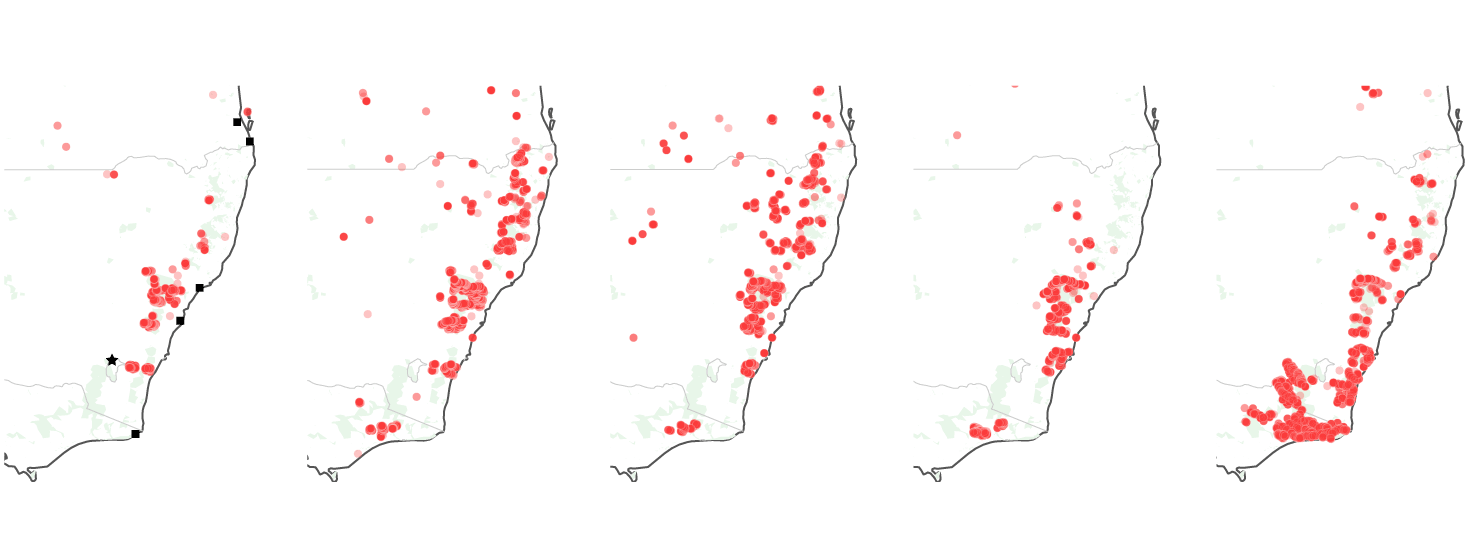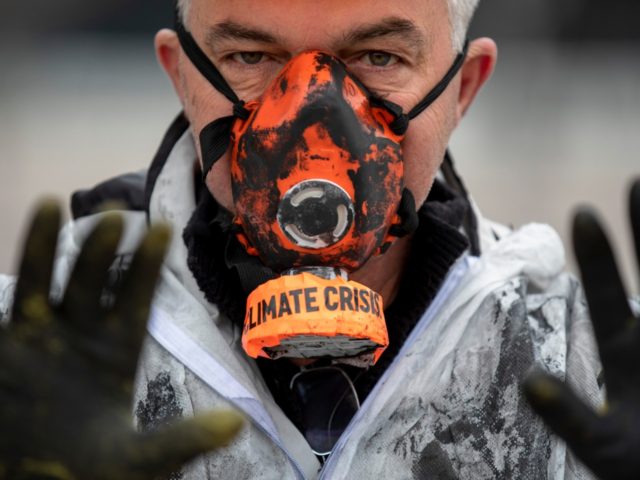Decadal variability of northern Asian winter monsoon shaped by the 11-year solar cycle
Authors
Authors and affiliations
Article First Online: 03 September 2019
Abstract
Climate signals associated with 11-year sunspot cycle have been extensively studied in various regions of the northern hemisphere, but the precise mechanisms remain elusive. Asian winter monsoon (AWM) is the most powerful circulation system on the Earth, yet its relationship with the 11-year solar cycle has not been explored. Here the response of AWM to the 11-year solar forcing is explored by analysis of numerical experiment results obtained from the Community Earth System Model-Last Millennium Ensemble (CESM-LME) modeling project. We show that a strong 11-year solar cycle can excite a resonant response of the intrinsic leading mode of the AWM variability, resulting in a significant signal of decadal variation. The leading mode, characterized by a warm Arctic and cold Siberia, responds to the maximum solar irradiance with a peculiar 3 to 4-year delay. We propose a new mechanism to explain this delayed response, in which the 11-year solar cycle affects the AWM via modulating Arctic sea ice variation during the preceding summer. At the peak of the accumulative solar irradiance (i.e., 4 years after the maximum solar irradiance), the Arctic sea ice concentration reaches a minimum over the Barents–Kara Sea region accompanied by an Arctic sea surface warming, which then persists into the following winter, causing Arctic high-pressure extend to the Ural mountain region, which enhances Siberian High and causes a bitter winter over the northern Asia.
Keywords
11-year solar cycle Asian winter monsoon Decadal variation Arctic sea ice Arctic warming
1 Introduction
The relationship between solar activity and Earth’s weather and climate has attracted enormous attention in climate research community over the past century (Siscoe 1978). Numerous model studies have suggested that the spectrum solar irradiance interacting with ozone can strongly affect stratospheric temperature and circulation, which then propagate downward to alter tropospheric general circulation (Haigh 1996; Matthes et al. 2006). Statistical correlations between the 11-year solar activity and the decadal climate variability have been found in the observations (Currie 1993; Soon 2005; Van Loon and Meehl 2012). At the peak years of the 11-year solar cycle, the climatological precipitation maxima in the tropical Pacific were found to be strengthened, further modulating the Pacific climate system, i.e., Pacific Decadal Oscillation (PDO) and El Niño-Southern Oscillation (ENSO) (Van Loon et al. 2007; Meehl et al. 2008, 2009). While for the Northern Hemisphere (NH) winter, links between the solar 11-year variability and the North Atlantic Oscillation (NAO) have been extensively investigated, which result in diverse views (Ineson et al. 2011; Scaife et al. 2014; Thiéblemont et al. 2015; Gray et al. 2016; Chiodo et al. 2019).
Understanding the physical processes involved in solar-climate connections is crucial to interpretation of the observed climate variability and predictability and to the projection of future climate change. A major process of solar influence that has been identified is via a ‘top-down’ mechanism. The ultraviolet radiation variability on heating rates in the tropical upper stratosphere may affect the meridional temperature gradients and the zonal mean wind anomalies, which then migrate poleward and downward through wave-mean flow interaction (Haigh 1996; Andrews et al. 2015). Another mechanism is the ‘bottom-up’ coupled air-sea mechanism. Increased total solar irradiance (TSI) over cloud-free regions of the subtropics translates into greater evaporation, and the resulting moisture is carried to the convergence zones by the trade winds, thereby strengthening the intertropical convergence zone (ITCZ), affecting the Pacific climate system (Meehl et al. 2008, 2009).
Asian winter monsoon (AWM) is the most powerful circulation system in the NH winter. Comparing with the complex structure of the Asian summer monsoon (Wang et al. 2001; Zhou et al. 2009), the surface circulation of the AWM is simply dominated by the gigantic Siberian–Mongolian High (Chang et al. 1983). Jin et al. (2019) had demonstrated that the decadal variation of the East Asian summer monsoon is possibly affected by the 11-year solar cycle through changing North Pacific decadal oscillation. It is expected that the 11-year solar cycle might also have a footprint in AWM variability. So far, the relationship between AWM and the 11-year solar cycle has not been explored. Therefore, we are curious about to what extent the 11-year solar cycle may affect AWM. In particular, what are the characteristics of AWM that are modulated by the 11-year solar cycle? If there is a linkage between them, how can an enhanced solar irradiance affect NH winter climate when the spot of direct sunlight moves toward the Tropic of Capricorn of the southern Hemisphere? The present work aims at addressing these questions.
It is of great difficulty to distinguish the 11-year solar cycle signal from the short-term observations of the AWM, because the amplitude of 11-year cycle is relatively small (Haigh 1996) whereas the AWM variability is affected by a variety of factors, including natural internal variability (e.g., ENSO, NAO) and other external (e.g., volcanic, anthropogenic) influences (Frame and Gray 2010; Gray et al. 2013). To isolate the impacts of the 11-year solar cycle, we analyze numerical simulation results derived from four solar-only forcing experiments and one control experiment (CTRL), which were conducted by the Community Earth System Model-Last Millennium Ensemble (CESM-LME) modeling project (Otto-Bliesner et al. 2016).
In this paper, we first explore the spatiotemporal variability of the AWM by using the monthly surface temperature data derived from the 20th Century Reanalysis V2 data provided by the NOAA/OAR/ESRL PSD (Compo et al. 2011), and then validate the model performance of the CESM in reproducing the AWM variability in Sect. 3. In Sect. 4, we explore the variation of the AWM modulated by the solar activity on decadal time scale, and examine the linkage between the decadal variation of AMW and the 11-year solar cycle. Then, the possible processes by which the 11-year solar cycle impacts the northern Asian winter are discussed in Sect. 5. In Sect. 6, we elaborate a new mechanism by which the 11-year solar cycle could affect Eurasian winter temperature by modulating the preceding summer and autumn Arctic sea ice variation. The last section presents major conclusions and discusses remaining issues.
https://link.springer.com/article/10.1007/s00382-019-04945-4
Conclusion and discussion
The main findings concerning how the 11-year solar cycle could potentially affect the decadal variation of the AWM are summarized as follows.
Since the simulations do not include the ‘top-down’ effect of solar variability (Otto-Bliesner et al. 2016), the mechanism proposed in this paper depends almost entirely on the increased solar forcing acting on the ocean surface. However, in the presence of the ‘top-down’ mechanism, what is the resultant response of AWM calls for further investigation. The results of our study are based on numerical experiments performed using a single climate system model with a four-member ensemble. More ensemble members are desirable for a more reliable detection of the decadal signals. In addition, multi-model simulation results should be investigated to verify the results obtained from the single model used here.

Authors
Authors and affiliations
- Chunhan Jin
- Bin Wang
- Jian Liu
- Liang Ning
- Mi Yan
- Chunhan Jin
- Bin Wang
- Jian Liu
- Liang Ning
- Mi Yan
- 1.Key Laboratory for Virtual Geographic Environment of Ministry of Education/State Key Laboratory of Geographical Evolution of Jiangsu Provincial Cultivation Base/Jiangsu Center for Collaborative Innovation in Geographical Information Resource Development and Application, School of Geography ScienceNanjing Normal UniversityNanjingChina
- 2.Department of Atmospheric SciencesUniversity of Hawaii at ManoaHonoluluUSA
- 3.Earth System Modeling CenterNanjing University of Information Science and TechnologyNanjingChina
- 4.Jiangsu Provincial Key Laboratory for Numerical Simulation of Large Scale Complex Systems, School of Mathematical ScienceNanjing Normal UniversityNanjingChina
- 5.Open Studio for the Simulation of Ocean-Climate-IsotopeQingdao National Laboratory for Marine Science and TechnologyQingdaoChina
- 6.State Key Laboratory of Loess and Quaternary GeologyInstitute of Earth Environment, CASXianChina
Article First Online: 03 September 2019
Abstract
Climate signals associated with 11-year sunspot cycle have been extensively studied in various regions of the northern hemisphere, but the precise mechanisms remain elusive. Asian winter monsoon (AWM) is the most powerful circulation system on the Earth, yet its relationship with the 11-year solar cycle has not been explored. Here the response of AWM to the 11-year solar forcing is explored by analysis of numerical experiment results obtained from the Community Earth System Model-Last Millennium Ensemble (CESM-LME) modeling project. We show that a strong 11-year solar cycle can excite a resonant response of the intrinsic leading mode of the AWM variability, resulting in a significant signal of decadal variation. The leading mode, characterized by a warm Arctic and cold Siberia, responds to the maximum solar irradiance with a peculiar 3 to 4-year delay. We propose a new mechanism to explain this delayed response, in which the 11-year solar cycle affects the AWM via modulating Arctic sea ice variation during the preceding summer. At the peak of the accumulative solar irradiance (i.e., 4 years after the maximum solar irradiance), the Arctic sea ice concentration reaches a minimum over the Barents–Kara Sea region accompanied by an Arctic sea surface warming, which then persists into the following winter, causing Arctic high-pressure extend to the Ural mountain region, which enhances Siberian High and causes a bitter winter over the northern Asia.
Keywords
11-year solar cycle Asian winter monsoon Decadal variation Arctic sea ice Arctic warming
1 Introduction
The relationship between solar activity and Earth’s weather and climate has attracted enormous attention in climate research community over the past century (Siscoe 1978). Numerous model studies have suggested that the spectrum solar irradiance interacting with ozone can strongly affect stratospheric temperature and circulation, which then propagate downward to alter tropospheric general circulation (Haigh 1996; Matthes et al. 2006). Statistical correlations between the 11-year solar activity and the decadal climate variability have been found in the observations (Currie 1993; Soon 2005; Van Loon and Meehl 2012). At the peak years of the 11-year solar cycle, the climatological precipitation maxima in the tropical Pacific were found to be strengthened, further modulating the Pacific climate system, i.e., Pacific Decadal Oscillation (PDO) and El Niño-Southern Oscillation (ENSO) (Van Loon et al. 2007; Meehl et al. 2008, 2009). While for the Northern Hemisphere (NH) winter, links between the solar 11-year variability and the North Atlantic Oscillation (NAO) have been extensively investigated, which result in diverse views (Ineson et al. 2011; Scaife et al. 2014; Thiéblemont et al. 2015; Gray et al. 2016; Chiodo et al. 2019).
Understanding the physical processes involved in solar-climate connections is crucial to interpretation of the observed climate variability and predictability and to the projection of future climate change. A major process of solar influence that has been identified is via a ‘top-down’ mechanism. The ultraviolet radiation variability on heating rates in the tropical upper stratosphere may affect the meridional temperature gradients and the zonal mean wind anomalies, which then migrate poleward and downward through wave-mean flow interaction (Haigh 1996; Andrews et al. 2015). Another mechanism is the ‘bottom-up’ coupled air-sea mechanism. Increased total solar irradiance (TSI) over cloud-free regions of the subtropics translates into greater evaporation, and the resulting moisture is carried to the convergence zones by the trade winds, thereby strengthening the intertropical convergence zone (ITCZ), affecting the Pacific climate system (Meehl et al. 2008, 2009).
Asian winter monsoon (AWM) is the most powerful circulation system in the NH winter. Comparing with the complex structure of the Asian summer monsoon (Wang et al. 2001; Zhou et al. 2009), the surface circulation of the AWM is simply dominated by the gigantic Siberian–Mongolian High (Chang et al. 1983). Jin et al. (2019) had demonstrated that the decadal variation of the East Asian summer monsoon is possibly affected by the 11-year solar cycle through changing North Pacific decadal oscillation. It is expected that the 11-year solar cycle might also have a footprint in AWM variability. So far, the relationship between AWM and the 11-year solar cycle has not been explored. Therefore, we are curious about to what extent the 11-year solar cycle may affect AWM. In particular, what are the characteristics of AWM that are modulated by the 11-year solar cycle? If there is a linkage between them, how can an enhanced solar irradiance affect NH winter climate when the spot of direct sunlight moves toward the Tropic of Capricorn of the southern Hemisphere? The present work aims at addressing these questions.
It is of great difficulty to distinguish the 11-year solar cycle signal from the short-term observations of the AWM, because the amplitude of 11-year cycle is relatively small (Haigh 1996) whereas the AWM variability is affected by a variety of factors, including natural internal variability (e.g., ENSO, NAO) and other external (e.g., volcanic, anthropogenic) influences (Frame and Gray 2010; Gray et al. 2013). To isolate the impacts of the 11-year solar cycle, we analyze numerical simulation results derived from four solar-only forcing experiments and one control experiment (CTRL), which were conducted by the Community Earth System Model-Last Millennium Ensemble (CESM-LME) modeling project (Otto-Bliesner et al. 2016).
In this paper, we first explore the spatiotemporal variability of the AWM by using the monthly surface temperature data derived from the 20th Century Reanalysis V2 data provided by the NOAA/OAR/ESRL PSD (Compo et al. 2011), and then validate the model performance of the CESM in reproducing the AWM variability in Sect. 3. In Sect. 4, we explore the variation of the AWM modulated by the solar activity on decadal time scale, and examine the linkage between the decadal variation of AMW and the 11-year solar cycle. Then, the possible processes by which the 11-year solar cycle impacts the northern Asian winter are discussed in Sect. 5. In Sect. 6, we elaborate a new mechanism by which the 11-year solar cycle could affect Eurasian winter temperature by modulating the preceding summer and autumn Arctic sea ice variation. The last section presents major conclusions and discusses remaining issues.
https://link.springer.com/article/10.1007/s00382-019-04945-4
Conclusion and discussion
The main findings concerning how the 11-year solar cycle could potentially affect the decadal variation of the AWM are summarized as follows.
- 1. The leading mode of the Asian winter monsoon (AWM), characterized by a cold northern Asia between 40 and 70°N, is an intrinsic mode of AWM variability. However, the external forcing provided by strong 11-year solar cycle can excite a significant decadal signal in the leading AWM mode.
- 2. The response of the leading mode of the AWM reaches the strongest phase 4 years after the maximum solar irradiance. Thus, the 11-year solar cycle-excited decadal variation of the AWM is approximately in phase with the accumulated total solar irradiance.
- 3. The influence of the 11-year solar cycle on the AWM is mainly via modulating Arctic sea ice variation over the Barents–Kara Sea region during the preceding summer and fall. The Arctic sea ice melting reaches a maximum after a 4-year delay following the peak of the solar irradiance. The summer melting of sea ice causes winter Arctic warming north of 70°N, which, in turn, generates extensive coldness over northern Asia and North Pacific through strengthening the Ural mountain pressure ridge and enhancing the Siberian High in the high latitude of Asia.
Since the simulations do not include the ‘top-down’ effect of solar variability (Otto-Bliesner et al. 2016), the mechanism proposed in this paper depends almost entirely on the increased solar forcing acting on the ocean surface. However, in the presence of the ‘top-down’ mechanism, what is the resultant response of AWM calls for further investigation. The results of our study are based on numerical experiments performed using a single climate system model with a four-member ensemble. More ensemble members are desirable for a more reliable detection of the decadal signals. In addition, multi-model simulation results should be investigated to verify the results obtained from the single model used here.












